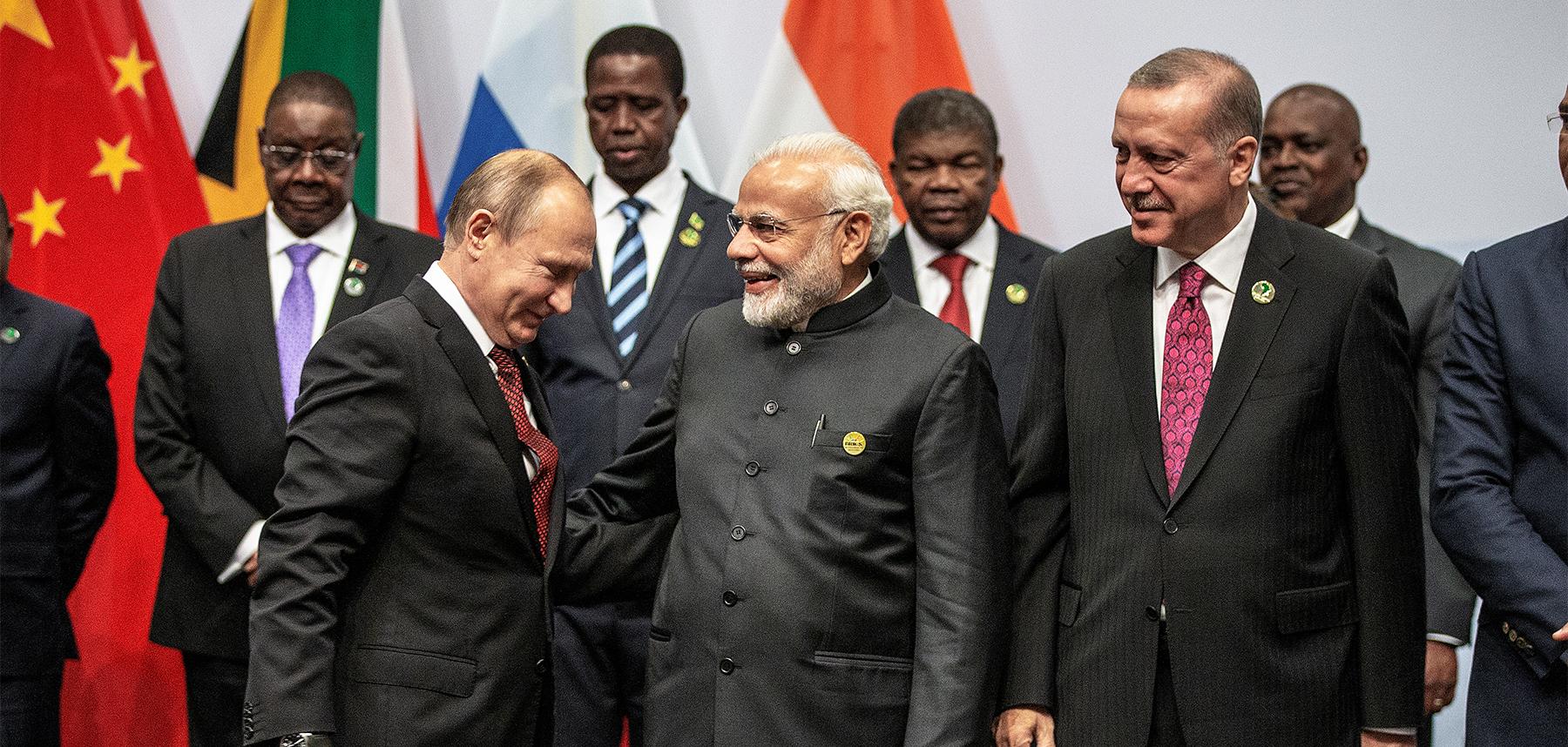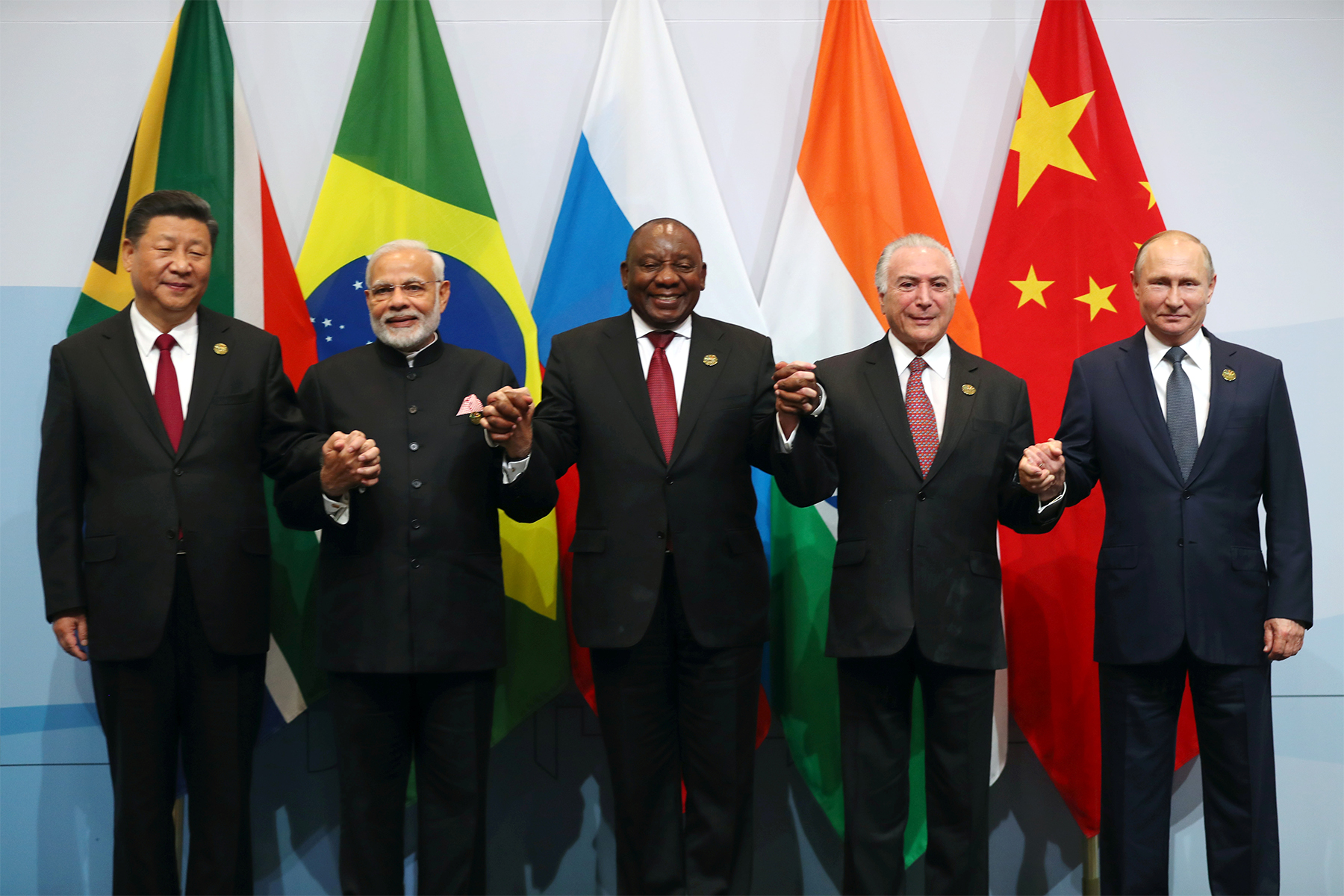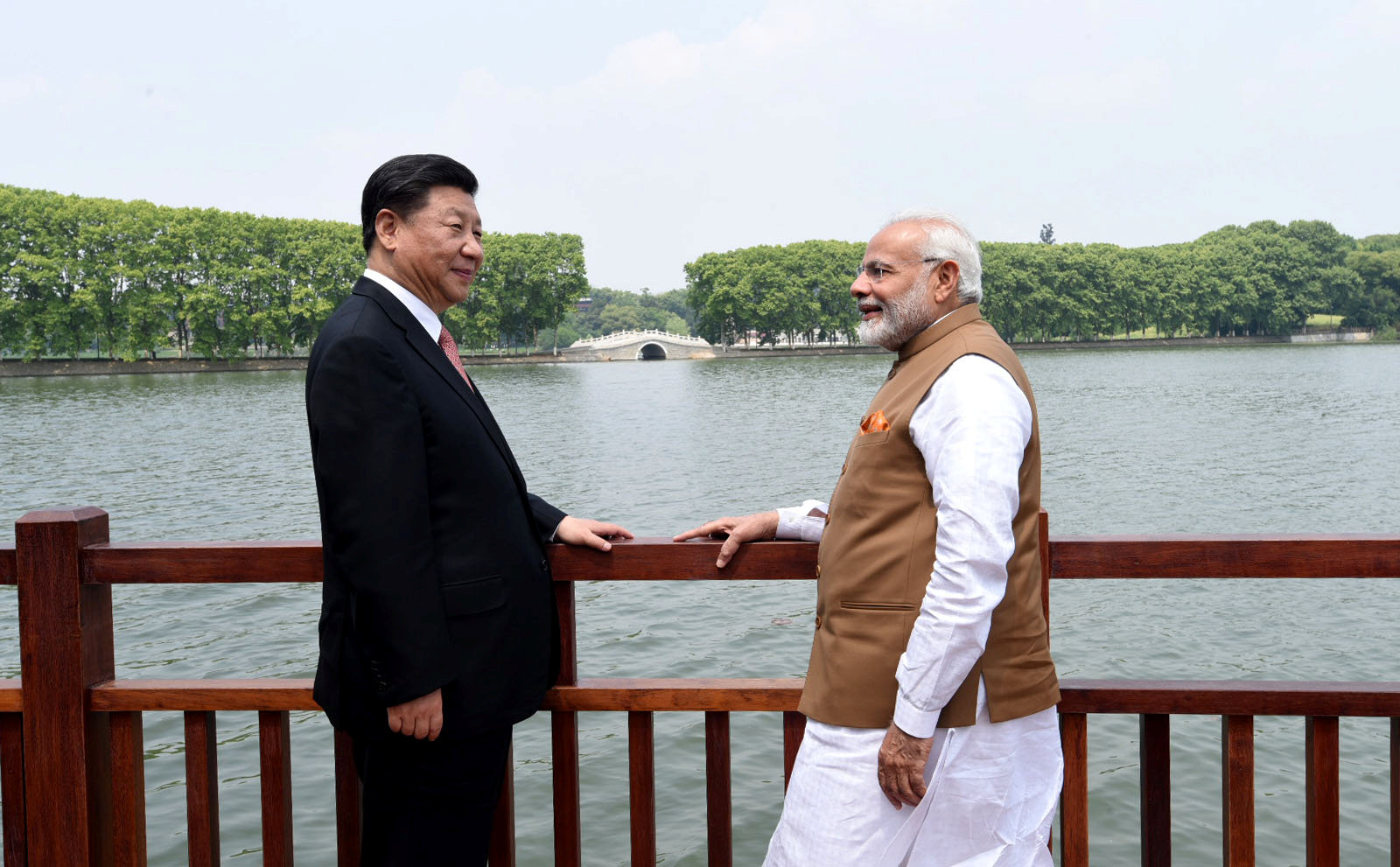India and Latin America: When a Rising Power and an Emergent Growth Pole Engage
In
Login if you are already registered
(votes: 3, rating: 5) |
(3 votes) |
Assistant Professor of International Relations and Strategic Studies, at the Department of International Relations, Goa University
For a nation that has routinely punched below its weight in global affairs, engagement, with a geographically detached, colonially-induced linguistically divergent, and distinctly geopolitically oriented regional expanse of Latin America, has comprehensibly remained, largely peripheral in popular consciousness, and marginal to strategic calculus, alike, exacerbated further, by enduringly held stereotypical conceptions on either side. Notwithstanding intermittent expressions of symbolic affinities, coalesced around solidarist notions of South-South cooperation, and episodic instances of minimal bilateral exchanges, the once insular and anemic economic spaces providing for competitive rather than complementary equations, have rendered ties, grossly underwhelming. Yet, amidst the shifting geostrategic centre of gravity, and the dint of mainstay western economies plateauing, in terms of growth indexes, financial flows, and commercial interchange, plausible attention has gravitated to discerning the foreign policy trajectories and diplomatic profiles of vanguard developing countries and veritably emergent regions, in terms of their economic and societal interaction. India and Latin America, as the premier global economic space and a potential growth pole respectively, are embracing new strategic choices and diversifying into new strategic options, towards recasting and transforming their once-staid mutual relationship, borne of New Delhi’s desire to shed inertia and substantively integrate on a global canvass, and premised, on the Western Hemispheric region’s inclination, to break-out of the lingering hegemonic shadow of Washington.
For a nation that has routinely punched below its weight in global affairs, engagement, with a geographically detached, colonially-induced linguistically divergent, and distinctly geopolitically oriented regional expanse of Latin America, has comprehensibly remained, largely peripheral in popular consciousness, and marginal to strategic calculus, alike, exacerbated further, by enduringly held stereotypical conceptions on either side. Notwithstanding intermittent expressions of symbolic affinities, coalesced around solidarist notions of South-South cooperation, and episodic instances of minimal bilateral exchanges, the once insular and anaemic economic spaces providing for competitive rather than complementary equations, have rendered ties, grossly underwhelming. Yet, amidst the shifting geostrategic centre of gravity, and the dint of mainstay western economies plateauing, in terms of growth indexes, financial flows and commercial interchange, plausible attention has gravitated to discerning the foreign policy trajectories and diplomatic profiles of vanguard developing countries and veritably emergent regions, in terms of their economic and societal interaction. India and Latin America, as the premier global economic space and a potential growth-pole respectively, are embracing new strategic choices and diversifying into new strategic options, towards recasting and transforming their once staid mutual relationship, borne of New Delhi’s desire to shed inertia and substantively integrate on a global canvass, and premised, on the Western Hemispheric region’s inclination, to break-out of the lingering hegemonic shadow of Washington.

BRICS Should Avoid Becoming an anti-US Group
If entities have to draw closer, then notwithstanding the imperative for economic convergence and commercial compact, political affability is the key, and this is where the irony, could not be more glaring. For the best part of seven decades of mutual diplomatic recognition, despite no baggage of history or vexatious legacy, the channels of communication and dialogue have been spartan and skeletal. While Prime Minister Nehru visited Mexico in 1961, despite his three sojourns up North to the United States, Indira Gandhi did not go beyond a solitary regional jaunt (an eight-country stump) in the late 1960s, that seemed for all its signature moment, to get reduced to New Delhi’s moral hectoring and sense of taboo, over the apparent dearth of democratization across Latin America. It fell to Dr. Manmohan Singh, to break the yawning inexplicable hiatus in sojourns when he traveled to Brazil for the BRICS Summit in 2006. While Indian Presidents have frequented the region over the past decade, covering a wide gamut of countries including those lack incandescence across Central and South America, quintessentially reciprocating the steady stream of Latin American leader’s visits to India, nevertheless, it goes without saying, that there is nothing that supplants the captivation, that an Indian Prime Ministerial sojourn can bring, the case-in-point being the albeit brief stop-over visit of Prime Minister Modi to Mexico in 2016, with India-Mexico ties finding renewed impetus to the extent where Mexico has topped Brazil, as India’s principal trading partner. This said, the fact that even a Prime Minister Modi, famed for his effective international gallivant, bringing traction for Indian foreign policy and national interests, has fleetingly touched the region, with standalone trips to Fortaleza (Brazil) for BRICS in 2014, to Buenos Aires (Argentina) for the G20 in 2018, with an impending visit to Rio de Janeiro (Brazil) again for BRICS, in the offing, at the end of the year. Furthermore, the Indian Foreign Office has been guilty of not disabusing the echelons in the political executive, to desist from relegating Foreign Minister visits to the region to the level of the Junior Minister in the External Affairs Ministry, a diminishment going beyond protocoled matters, to reflect strategic flippancy, one that has not gone down well with Latin American counterparts, already bewildered, by the failure of the Modi government to follow through on his predecessor’s assured commitment to expand the incidence of Indian Ambassadorial missions to LATAM countries.
President Ram Nath Kovind’s and Vice President Venkaiah Naidu’s respective recent-year calls on Chile, Bolivia, Argentina, Guyana, Suriname, Guatemala, Panama, Peru, Paraguay, and Costa Rica have headlined the incumbent Indian government’s expanded institutionalised engagement, building on New Delhi’s cultivation of myriad sovereigns of the region, through established and newfound platforms of collectives, from the Pacific Alliance grouping (India enjoys an ‘Observer’ status) to the pan-regional configuration of CELAC (India and CELAC have forged a Ministerial dialogue arrangement). Political fault-lines across the region, present themselves as a potential trip-wire, however, this challenge goes with the understood modern-day politico-diplomatic terrain of striking delicate balances across competitive axes, something that India has found itself fraught with, as in having to manage a comprehensive Strategic Partnership with powerhouse Brazil, dovetailed with potentially productive engagements with juxtaposing Argentina, Mexico, and the ilk. While no longer being lackadaisical, India’s view of Latin America still seems beset, by whimsicality and flippancy, and would do well to draw on certain instructive lessons, on how its inevitable peer competitor China, trenchantly cultivates the region.

BRICS Summit: A Blessing in Disguise
The well-established prime-mover, in any mutually beneficent international relationship, is the productivity and vibrancy of its economic dimension. India and Latin America have traversed a long way, since the end of the cold war, in forging economic and commercial ties, with trade having witnessed an exponential spike since the nascent days of India’s advent of liberalisation and Latin American embrace of neo-liberal economic prescriptions, in the wake of the demise in the bipolar schema in world affairs, a rising tide, that has continued, even with populist socialists who ascended to national helm-ship, on the Latin American scene. Mutual trade which registered a meager 200 million dollars, back in 1991-92, touched 2 billion dollars by the turn of the century and has been pegged at 35 billion dollars, in 2017-18. While these numbers are in itself promising, their magnitude nevertheless cloaks and belies some limitations in qualitatively and quantitatively augmenting what may be described as moderate trade volumes, for a relationship that binds the third largest global economy in purchasing power parity, with a five trillion dollars economic milieu. For starters, the tenor of commercial interchange is narrowly defined, delineated in terms of designated countries and specific product-lines, across them, as close to four-fifths of all Indian imports emanate from six to eight countries, and a similar vein of Indian exports, head for the reminiscent set of importing-destinations. For a region, that beholds a vast endowment of a spectrum of natural resources and for a rising national economy that solicits such strategic natural commodities for its industrial requirements, the proposition should be a self-evident no-brainer. Yet, an overtly transactional relationship, though not wholly undesirable, if overwhelmingly commoditized, lends itself to a capricious ebb-n-flow, that is the known upshot of vagaries and vicissitudes of pricing within the international resource market. The recent empirical trend of trade volumes staying steady within a bandwidth, speaks to the scope for such buyer-seller transactions in a small grouping of commodities, possibly, running its course, conditioned by sector-specific difficulties, hamstringing vested interests, and the ilk, with the latter increasingly perceived to be hobbling and unreasonably protracting negotiations on Preferential and Free Trade arrangements, amidst an enveloping environ of trade based protectionism, running rife.
To enhance the potential for greater commercial interaction within a sustainable frame, demands the need to explore and identify more pragmatic and innovative avenues at such cooperation, where, mutual handholding through collaborative joint-ventures and synergetic means for product co-development and manufacture, are the norm, concurrently espoused and practiced, alongside the current drift of trade-based activities, which, to its credit, though predominantly weighted to favour Latin American resource-exporting powers, is increasingly resembling a perceptible two-way street, with the challenge to make the trend, meaningful and material. While India taps into Venezuelan and Ecuadorian hydrocarbons, into Chilean copper, and Peruvian gold and silver, and now proposes to do likewise with lithium in Bolivia in particular, not to mention Brazilian and Argentine soy, Indian automobiles, pharmaceuticals, software technologies, chemicals and dyes, petroleum products, etc., find Latin America as pristine territory, exemplified in the showcase of Indian two-wheelers and four-wheelers cogently competing with pedigreed peers, such as the US and Japan, even eclipsing them, as has been the case with Indian wheels topping the charts, in Mexico, during 2018-19, and pitching for a robustly pervasive presence across mountain-terrain filled Andean countries. The bottom line is that, Latin American extractive capacitive wherewithal, needs to meet and mate with proven Indian expertise, in the domain of knowledge-economy and services-based exports, such that commercial exchanges are not contingent on the fortuitousness of serendipitous circumstances, like the Indian pharmaceutical industry’s entry into Latin America, which in the main, was the enabling by-product of the Lula led Brazilian government’s tiff with US pharma companies who refused to revise prices for anti-retroviral drugs, or for that matter, India stepping-up to source soy-imports from Argentina in 2010-11, bailing the South Atlantic nation out, from the dislocating impact of a cataclysmic shuttering by China of its soy-imports. To the contrary, trade ties should actually acquire the character of a genuine mutually beneficial partnership, infusing not just financial well-being through increased incomes, but also accretion through value-added technological inject and import into productive processes in manufacturing.
Intimately tethered to trade relations is the attendant investment scenario, which in the India-Latin America context, manifests intriguing and instructive lessons too, at a time when the conventional wisdom going around, emphasizes investment based commercialism over mercantilist investment. In contrast to the Indian State, which has been relatively tepid, in engaging, far away Latin America, it is India Inc., which has tended to be much more proactive. Outside of the Oil and Natural Gas Corporation (ONGC) Videsh, the footprint of Indian investment across the trans-continent has been left to the indulgent big daddies of the minerals and metals space, allied extractive and capacity building sectors, and the realms of the services-based knowledge-industry. Comparisons are inevitable with the buccaneering Chinese presence across the region, which leaves Indian investment portfolios paling, yet, it ought to be borne in mind that myriad instances of predatory and opacity behavior by Chinese State Corporations leveraging the heft and pelf of an imposing edifice of State-led development, has unleashed disruptions and dislocations in multiple projects, catalysing popular resentment. In contrast, India, with its multi-party democratic consensus model, does not peddle the case of its industry, but does put a premium on fostering investment projects, underpinned, by attributes of financially viability, social amenability and environmental sustainability, putting them on more sound footing in bridging the disconnect that exists between the political class and the societal genre, over precisely what model of capacity building investment should these turbulent young democracies in the region, adopt. Much of the Indian investment spree has focussed on acquiring stakes in mineral and metals mining, across Bolivia, Ecuador, Peru; investing in holdings of agri-commodities from Sugar in Brazil to Soya in Argentina, and beyond; and in establishing manufacturing facilities in automobiles, besides nesting research, development and technology centers through the pharmaceutical (Ranbaxy, Reddys’ Laboratories, etc.,) and information technology (Tata Consultancy Services, Infosys, etc.,) entities, who are accounting for one-half of all local employment procreated, by such investment.

Heartland Reunion: Geopolitical Chimera or Historical Chance?
While India lacks the global prowess to pull-off mega projects in ports, expressways, hydro-dams, etc., of the kind that China alluringly dangles, before a gapingly infrastructure deficient Latin America, Indian investment can most certainly make a material splash, in advancing the cause of benign socio-economically empowering emancipation, through agriculture, housing, skills-sets improvement, education and human resource development, soft-sector capacitation, etc., which is also strategic. This said, as India Inc., burgeons incapacity for execution and attendant ambition in the extant, it is beginning to be backed by the Indian Government. The visit of President Kovind to the trinity countries of Chile, Bolivia and Argentina, proverbially touted, as the ‘Lithium Triangle’, must be viewed in the context of New Delhi seeking to go big in embarking on its lithium based Electric Vehicles revolution, which Indian Industry estimates to account for 30 billion dollars sector, by 2030, mandating huge prospective investments by corporate India tapping into the lithium pans of Bolivia and Chile. Similarly, Indian Industry has also exhibited interest in bidding for agro-processing projects, in pursuance of accomplishing the critical futuristic goal of food security across grasslands abundant but population sparse, Latin American expanse.
Trade and Investment apart, there is much for India and Latin America to dispose of, in the external environment, from shaping the global order in terms of greater democratization and multilateralism, to chaperoning the evolving regimes on management and harness of global commons. Latin America countries, which are emerging as pioneers in their own right, in the form of Chile, which apart from being an exemplary young democracy, is strutting its stuff in the solar energy space, not to mention salubrious and sylvan Costa Rica in Central America, whose sustainable development strategies and zero-carbon emissions driven clean energy practices are finding ravings, are countries whose governance priorities find major convergence with the incumbent Indian dispensation’s flagship strategic initiatives. No wonder then, that Latin American countries have been effusive in welcoming and even expressing their interest to be incorporated, within the ‘Indo-French’ collaborative enterprise of the one hundred and twenty countries strong International Solar Alliance established in 2017, and headquartered in Gurgaon (India), with the ostensible objective of promoting renewable energy development through expanding the engendering and use of solar energy across the vast and wide swathe of developing comity of countries, straddling the twin Tropics. Similarly, when Prime Minister Modi availed of his address to the UNGA in 2014, to moot the idea of the global celebration of the yeomen contribution of Yoga, to the holistic concept of Wellness-based-Health, by enshrining an International Day of Yoga, the Latin American collective of sovereigns were the earliest to pitch their tent in support of the missive for the commemoration of Yoga, given the extent of its embrace-of and popularity-in, the region.
This said South-South cooperation is not without its own creases. New Delhi has to encounter its own share of stresses and tensions, from withstanding incessant American pressure to shutter oil purchases from civil strife torn Venezuela, to having to contend with top trading partner Mexico banding with the Coffee Club subset of spoilers within the UN, which seeks to torpedo the candidature of the G-04 (India, Brazil, Germany and Japan), who advocate their eminent credentials for Permanent Membership of the UN. At the core of a new era in India-Latin America relations, has to be creation and nurturing of much-improved understanding of each other’s societal spaces, the need to encourage greater interaction through educational, touristic, and technologically based exchanges, towards alleviating apathy and ameliorating benign neglect, of each other. Notwithstanding, there needs to be more diplomatic capital expended in working in concert, at global forums and platforms, strengthening dialogues within the frameworks of BRICS, IBSA, BASIC, G-04, and the G-20, but also reaching beyond. The Indian approach to the heterogeneous Latin American region in perpetual strategic churn has to be enterprising and enlightened, anchored in the time-honored and time-tested virtues of strong bilateralism, curated sub-regionalism, and constructive regionalism, as mutual building-blocks and re-enforcers. Thus far, India-Latin America ties have been kept alive, largely through individualized efforts, of those stakeholders whether in business and industry or in literary and entertainment fields, plowing indomitable lone furrows. Time is nigh for dispensations at either end, to chart out a consistent, coherent and sustainable roadmap, for comprehensive integrating relations.
(votes: 3, rating: 5) |
(3 votes) |




